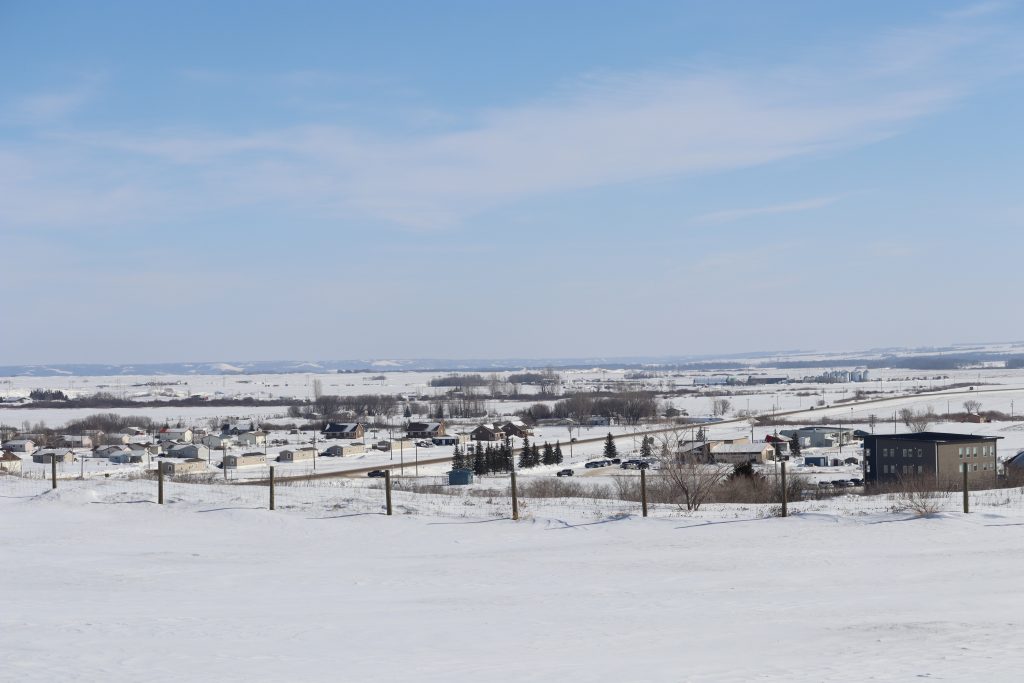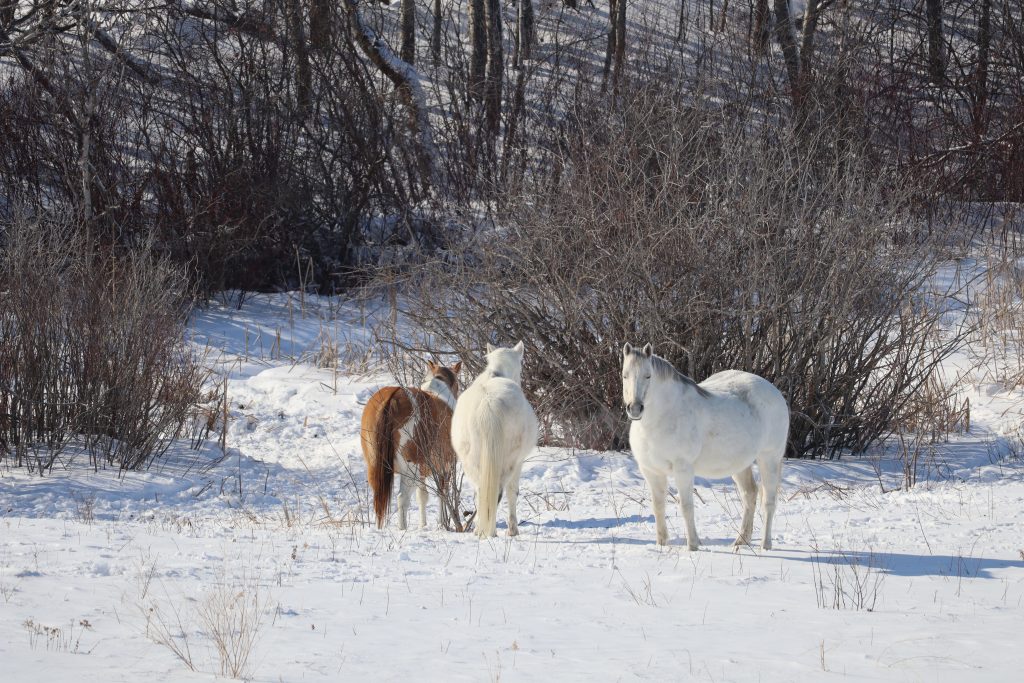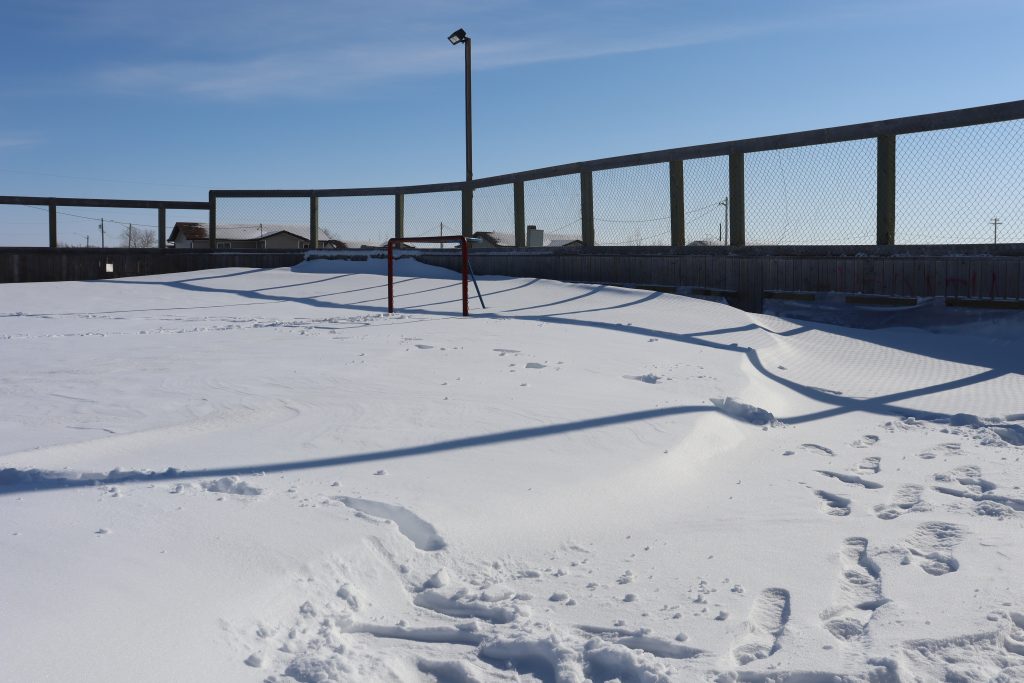Listen to the story:
On June 14, 2021, Vegas Golden Knights defenceman Zach Whitecloud cycled the puck to begin a passing play that resulted in Mattias Janmark scoring to give Vegas a 3-1 lead in the first game of the Stanley Cup Semifinals.
The assist was Whitecloud’s third and final point in a playoff push that saw the Golden Knights fall to the Montreal Canadiens in six games. While he ultimately came up short of his goal to win the Stanley Cup, Whitecloud showed that he would be a solid player in the National Hockey League for years to come.
The then 24-year-old was rewarded for his performance with a six-year, $16.5 million contract extension with the Golden Knights shortly after the season ended.
The deal was the fourth largest the Golden Knights had ever given to a defenceman in their five-year stint in the NHL. It locked up an important spot on their roster as they push for a Stanley Cup championship.
For Whitecloud, the contract made him one of the highest-paid Indigenous athletes of all time and more importantly gave him certainty for the first time in his athletic career.
Whitecloud entered the 2021 season as one of six Indigenous players in the league and of that group, one of two born in Manitoba. While he is still writing his story, he has forged his singular path with determination and relentless hard work.
Sioux Valley Dakota Nation heritage
Located a brisk 30 minutes West of Brandon, Manitoba, is the reservation of Sioux Valley Dakota Nation where Zach’s father Tim was born and raised.
Tim doesn’t live on the reserve anymore, but he visits every week. As he enters the place he called home for nearly 20 years, he passes a large sign with a picture of Zach.
The land of Sioux Valley Dakota Nation perfectly emulates what the rural Canadian prairies are all about: flat, dry ground, ranches and farmland stretching as far as the eye can see and quiet dirt roads.

Sioux Valley Dakota Nation is home to just over 1,000 people and is different from the other 375 Manitoba reserves, as it is the only Indigenous community that is self-governed.
In a statement on their website explaining why they are self-governed, Sioux Valley Dakota Nation said the Indian Act and policies of the Department of Indian Affairs have led to detrimental impacts and interference with the progress of First Nations communities. By choosing a self-governance, they are not subject to the Indian Act policy and can follow a government based on Dakota traditions.
Tim recently got on the Sioux Valley Dakota Nation Chief and Council in an effort to become more involved in his community. While he’s in town, he visits the Whitecloud family farm, where he and his two brothers were raised.
Growing up, Tim and his brothers helped on the farm where their family ranched horses and cattle and harvested grain. His brothers still maintain the land.

Tim has fond memories of working on the farm growing up, but his first true love was hockey.
When he was younger, he would practice and play pickup games with other kids in the community. He also travelled to surrounding towns for the opportunity to play organized games since there were few minor hockey programs close by.
When he was 15, Tim was recruited by an under 18 team in Brandon and moved there with the blessing of his parents. Tim stayed with a billet family in Brandon throughout high school and played as high as the Junior B level with the Brandon Stingers.
Years later, in 1996, while he was working and making the transition to senior level hockey, Tim’s first and only son Zach Whitecloud was born in Brandon.
Eat, sleep, school, hockey
Heavily influenced by his father, Zach learned how to skate before he learned how to walk.
At the age of two, he took his first strides on rollerblades in the basement of his childhood home in Brandon.
When winter rolled around, he traded those rollerblades for his first pair of ice skates and moved to a square backyard rink Tim had made for him. The rink used old plywood for boards and was only about 150 square feet, but Zach loved it.

“He took to hockey right away,” Tim said. “There were times that I would have to pull him off the rink because he didn’t want to leave.”
As Zach grew, so did the backyard rink. Eventually, there came a point where Tim was forced to cut down trees in the backyard to make the necessary space to extend the rink.
When he was old enough, Zach started playing organized hockey in Brandon. When he wasn’t playing with his team, he was practicing on the outdoor rinks with friends and teammates.
In the summer, he kept in shape by working on the family farm in Sioux Valley Dakota Nation and playing baseball, soccer, golf, and rugby.
Zach and his dad would visit the reserve a few times a week to see his uncles and relatives.
The community played a big role in Zach’s youth hockey career as they helped the family come up with the funds necessary for travel, equipment, and registration.
Zach was always a solid player, but never stood out as a superstar talent. While attending Vincent Massey Collegiate, Zach was cut from Brandon’s 18U team twice and was forced to play at the high school level.
He finally made the team his third year, but again had trouble getting on the radar of teams at the next level.
Junior hockey career
Canadian hockey players who aspire to play professionally usually take one of two routes, major junior or post-secondary hockey. Canada has a major junior league called the Canadian Hockey League, which is seen by many as the world’s top program for developing professional players.
Many players prefer this route since they can start their careers against top competition earlier and can get drafted to the NHL directly from the league.
The CHL branches out into three smaller leagues called the Western Hockey League, the Ontario Hockey League and the Quebec Major Junior Hockey League.
Each year, the teams for these regional leagues select the most talented 16-year-olds in the country during the draft.
Zach was eligible to be drafted to the WHL, but all 22 teams passed on him.
With the desire to keep playing at a high level, Zach chose the next best option in the Manitoba Junior Hockey League.
While it doesn’t garner the respect of the leagues in the CHL, the MJHL is the second-highest level of junior hockey in Canada and has seen over 270 alumni reach the NHL.
Zach joined the Virden Oil Capitals in 2013 and moved away from home for the first time. His lifestyle now revolved around hockey.
The summer before he moved to Virden, he joined a local gym, trained early every morning, and revamped his diet. His hard work pushed him to lose 20 lbs, and his on-ice performance took another step up.
He was named an alternate captain of the team in 2015 and enjoyed two strong campaigns in Virden, where he posted 50 points and helped the team reach the playoffs.
Zach’s game was finally starting to take off, but at 19 he was forced to make another tough decision in the middle of the season. The age cap for players in the MJHL was 20. The clock was ticking for Zach if he wanted to reach the next level.
Since the age cap in the WHL was also 20, he decided his best option would be to play for a college or university team.
With help from his coaching staff in Virden, Zach shot a recruiting video and sent it out to a number of post-secondary coaches in Canada and the United States.
The video, which can still be found online today, showcased his skating abilities, defensive talents, and offensive skills from the Oil Capitals season.
The video ended up in the inbox of Bemidji State University head coach Thomas Serratore, who was immediately impressed by what he saw.
“As soon as I saw the tape, I turned to my assistant coach and said, ‘this kid’s pretty good,’” Serratore said. “We knew we wanted to see more of his ability.”
The interest of Serratore and his coaching staff was so real that they travelled to Manitoba in the middle of a December snowstorm to catch one of his games in person.
“We watched him play and immediately knew we wanted to recruit him to the Beavers,” he said.
Serratore offered Zach a scholarship to BSU the day after watching him play. Zach got some loose interest from other teams, but he ultimately decided he was going to go to BSU.
Since the school is only a seven-hour drive from Brandon, the Whitecloud family felt comfortable with Zach living in a new country.
A move south
Once Whitecloud’s signing at Bemidji was official, he wasted no time getting acclimated to their program by spending the summer training with the team.
“Right away, he wanted to work with our strength coach and train with our team,” Serratore said. “That’s not common for incoming players, and I think that is a testament to who he is.”
Zach’s hard work didn’t stop after summer camp. He showed up to the team’s facilities every morning at 7 a.m. before class to train and stretch. He also often stayed late after practice to work on his game.
His preparation and dedication to get better every day quickly shot him up the ranks of the team’s depth chart.
“We didn’t have high expectations for him since he was a freshman,” Serratore said. “Once training camp started, we knew we had something special with him.”
Zach immediately earned a spot on the first power play unit and got into all 41 games the Beavers played in his freshman season.
Zach continued to improve, and Serratore said he saw NHL potential in Zach halfway through the year.
“By November or December, he was no longer a hidden commodity,” he said. “We knew we were going to lose him to the NHL before his four years were up at BSU.”
Zach opted to play one more season at BSU in 2017-18 to develop his game before turning professional. It ended up being the best year of his career to date.
In 36 games, he led the Beavers in blocked shots and anchored a power play unit that set a record for efficiency. He also carried his excellence to the classroom, where he was named a WCHA Scholar-Athlete and made the WCHA All-Academic Team.
Zach’s strong performance at BSU landed him a spot on Team Canada at the 2017 Karjala Cup in Finland, where he recorded an assist and helped the team secure a fourth-place finish.
Dreams become reality
At the conclusion of his sophomore year at Bemidji, Zach had a collection of NHL offers at his disposal and was invited to try out for 29 of 31 teams.
He eventually signed a three-year entry-level contract with the Vegas Golden Knights.
He was assigned to develop with the team’s minor league team in Chicago, where he spent two seasons and impressed the team’s scouting department.
On April 5, 2018, he made his NHL debut in a game against the Edmonton Oilers. The appearance made him the first NHL player from the Sioux Valley Dakota Nation.
Zach hit the ground running with the Golden Knights, just as he had every step of his journey.
He is known for his smooth skating abilities and while he doesn’t put up eye-popping point totals, he consistently contributes to the team with his pinpoint passing accuracy.
Zach is now approaching his 100th career game and is a mainstay on the team’s blue line. He has helped Vegas reach the playoffs every year he’s played and constantly receives praise from his teammates and coaches.
Even though his West Coast games typically start at 9 p.m. Central Time, many residents of Sioux Valley Dakota Nation stay up to watch him play. Tim said that some Elders who had never previously watched hockey now gather to watch every game.
Never forget where you came from
With his playing situation secure in Nevada, Zach has turned more attention to the community that helped raise him.
He’s now a role model for the youth of Sioux Valley Dakota Nation and regularly attends cultural events and speaks at local schools.
Zach has previously said that he is proud of his heritage and doesn’t shy away from having important conversations.
Following the horrific discovery of unmarked graves in Kamloops, he took to Instagram to issue a statement.
“I share the pain and grief that all my fellow First Nations brothers and sisters are feeling right now,” he said. “I believe it is important for us all to educate ourselves on the history of the residential schools program. We need to accept the uncomfortable fact that the schools were a significant part of our past, and we need to acknowledge that they have caused significant trauma for thousands of Indigenous families.”
Tim said he’s proud of his son for taking a stand and believes having an Indigenous role model to speak out in situations such as that in Kamloops is an important step in educating others.
A new wave of Indigenous athletes
Discrimination is an obstacle that many Indigenous people face at some point in their lives. For professional athletes, the hate can be public.
In May of 2021, then Edmonton Oilers defenceman Ethan Bear was the victim of racist comments on social media following a loss.
Bear used the team’s Twitter account to issue a statement saying he is proud of where he comes from and is playing for the next generation.
Bear, who was born in Saskatchewan and hosts a summer hockey camp in Ochapowace First Nation for Indigenous youth, received an outpouring of support following his statement.
Carriera Lamoureux of the Manitoba Aboriginal Sports and Recreation Council said having role models like Bear and Whitecloud to look up to is paramount for young Indigenous athletes.
“When you have athletes of notoriety coming back to their community to tell kids they can do it, it creates pathways and opportunities for success,” she said. “Once a young person sees what the possibilities are, they can have a vision for their future.”
She said Indigenous athletes face many barriers.
“You might have an individual who aspires to do something athletically, but they don’t have access to high-speed internet, or they live in an isolated community, and the number of resources it would take to get them to their closest recreation centre would be immense.”
To help combat these barriers, Lamoureux and the Manitoba Aboriginal Sports and Recreation Council try to make sports and recreation more accessible by providing anything they can to athletes in need.
She is also the organization’s Sport for Social Development Manager.
The focus of the program, as the name suggests, is to use sport as a pathway for social change.
“Sports are not just hockey sticks, basketballs and golf clubs. It’s a way to motivate, encourage and keep young people safe so they can do productive things with their lives,” Lamoureux said. “That can look like anything from improving employability, reducing adverse behaviour or improving enrollment in schools.”
Lamoureux said they would love to have Zach and other Indigenous role models at their events to speak and inspire their programs.
The future of sports in Sioux Valley Dakota Nation
Winnipeg isn’t the only place in Manitoba looking to improve sports and recreation resources for Indigenous youth in Manitoba.
While working with the Chief and Council of Sioux Valley Dakota Nation, Tim has pushed the community to prepare their outdoor rink, which had previously been buried under a bed of snow.

“The rink is a great outlet for the kids, especially during COVID,” he said. “Since we don’t have minor hockey anymore, it gives the community a way to play.”
Looking ahead to the warmer months, Tim wants to start baseball and softball programs for the community.
His long-term goal, once COVID-19 subsides, is to form organized teams in multiple sports to represent Sioux Valley Dakota Nation and compete with surrounding towns.
While Tim organizes youth sports in Sioux Valley Dakota Nation, and Zach continues his career in the NHL, there is no doubt that young athletes from the community will be looking up to Zach as a role model and rooting for him every step of the way.
